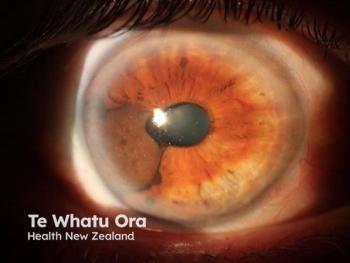
Photoprotection crucial for all skin types
Dermatologists need to be vigilant and more aware of the type and frequency of skin cancers that can occur in patients with darker Fitzpatrick Skin Types, an expert says. In addition to examining the “typical” sites where these tumors occur, dermatologists should also carefully inspect the oral mucosa as well as the palms and soles.
Although melanoma and non-melanoma skin cancers such as basal cell carcinoma (BCC) and squamous cell carcinoma (SCC) are more prevalent in Caucasian skin, patients with darker Fitzpatrick Skin Types are also at risk of developing skin cancers, underscoring the importance for this patient population to practice appropriate photoprotection.
Henry Lim, M.D.“Similar to fair skinned individuals, darker skinned individuals can also get sunburned and suffer the detrimental effects of ultraviolet (UV) exposure, which can contribute to the development of skin cancers. As such, appropriate measures of photoprotection such as the use of topically applied sunscreens with an SPF factor of at least 30, sun-protective clothing and sun avoidance must be practiced,” said Henry W. Lim, M.D., Chairman and C.S. Livingood Chair, department of dermatology, Henry Ford Hospital, Detroit.
Skin cancers occurring in darker skinned patients also tend to be more pigmented than those occurring in Caucasian skin. While the typical sites of non-melanoma skin cancers in Asians and African Americans are similar to that of Caucasians, Dr. Lim said that darker skinned individuals can more commonly develop melanoma in atypical locations such as on the palms and especially the soles. According to Dr. Lim, this may, in part, be the reason why skin cancers and particularly melanoma is often diagnosed at a more advanced stage in darker skinned patients, underscoring the need for careful skin examinations and a higher vigilance in this patient population.
NEXT: Risk education
Patient education
Darker skinned individuals also need to receive appropriate education regarding their skin in terms of their risk of skin cancer development, as some patients may have a false misconception regarding their risk. In addition, Dr. Lim said that darker skinned patients tend to have lower levels of vitamin D and therefore, it is important that dermatologists also educate this patient population in taking appropriate vitamin D supplementation.
“Compared to the fair-skinned patient population, darker skinned patients are much less concerned of skin cancer in general because many erroneously believe that they will be less affected by the disease due to their darker skin phenotype. They are much less aware of the possibility of sun damage and the damage that UV can inflict on their skin, and therefore need to educated appropriately in this regard,” Dr. Lim said.
In terms of prevalence, squamous cell carcinoma is the more common non-melanoma skin cancer in African Americans followed by BCC Dr. Lim said, which is reversed in Caucasian skin where BCC occurs more frequently than SCC. In Asian skin with a darker Fitzpatrick Skin Type (i.e. South Asians), SCC is more common than BCC and in fairer skinned Asians (i.e. East Asians) BCC is more prevalent than SCC, similar to Caucasians.
Dermatologists need to be vigilant and more aware of the type and frequency of skin cancers that can occur in patients with darker Fitzpatrick Skin Types, Dr. Lim said. In addition to examining the “typical” sites where these tumors occur, dermatologists should also carefully inspect the oral mucosa as well as the palms and soles.
“The demographics are changing in the United States and as such, we are seeing more and more patients with skin of color. Therefore, it is important to know the prevalence of melanoma and non-melanoma skin cancers in this patient population so that we can better recognize the disease in a more timely fashion,” Dr. Lim said.
Newsletter
Like what you’re reading? Subscribe to Dermatology Times for weekly updates on therapies, innovations, and real-world practice tips.

















